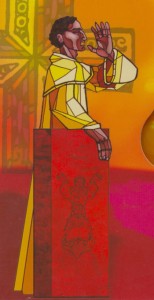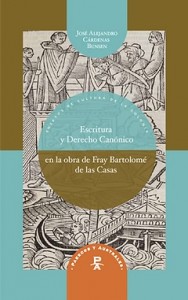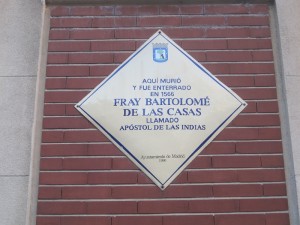Francisco de Vitoria is arguably considered a pioneer in the formation of modern international law (see, for example, Georg Cavallar’s The Rights of Strangers). His Renaissance retrieval of the concept of ius gentium served as a basis for the following claim: “Amongst all nations it is considered inhuman to treat strangers and travelers badly without some special cause. On the contrary, it is humane and dutiful to behave hospitably to strangers.” (De Indis, q.3, 1; cf. Cicero De Officiis, 3.11) The law of hospitality, as Cicero once wrote and Vitoria echoes, demands that a city requires strangers to enter into it and be provided for within its walls. Critics here generally attack what Vitoria called the right of communication and travel (ius peregrinandi) as a pretext for invading foreign lands and justfying conquest through “worldwide consensus,” or, in other words, European Ibero-Catholic consciousness. Yet these critiques have the tendency to exaggerate Vitoria’s project by dehistoricizing him and unjustly viewing him as a mouthpiece for conquest (I am thinking here especially of The American Indian in Western Legal Thought by Robert Williams).
While it is not my intention to give Vitoria a fair reading at this juncture, it is worth noting that strong critics of Vitoria and the School of Salamanca tend to see him as stuck in a medieval worldview whereby religion (i.e., the Church) has a formative and constitutive role in the shaping of culture. This is really an historical question about the meaning and definition of Christendom. What is assumed by the strong critics (oftentimes liberal but even postcolonial perspectives) is the dogma that nothing prior to the seventeenth century, or the Radical Enlightenment, or the UN, or the Second Vatican Council (or ever), could understand and defend rights in a universal sense, irrespective of creed and culture. In other words, nothing premodern in the West –whether it is the Spanish Vitoria or the medieval world that preceded him — can be tied to a legitimate concept of universal rights because of the oppressive form of religiosity characeteristic of the Latin West. It was, after all, “a persecuting society” as R.I. Moore says.
It is on this score that I find the speech delivered by Pope John Paul II to the UN in New York City in 1995 especially noteworthy:
In reality the problem of the full recognition of the rights of peoples and nations has presented itself repeatedly to the conscience of humanity, and has also given rise to considerable ethical and juridical reflection. I am reminded of the debate which took place at the Council of Constance in the fifteenth century, when the representatives of the Academy of Krakow, headed by Pawel Wlodkowic, courageously defended the right of certain European peoples to existence and independence. Still better known is the discussion which went on in that same period at the University of Salamanca with regard to the peoples of the New World.
Although this is a blog on the School of Salamanca, it is only fitting to give credit to that earlier Polish school of thought JPII mentioned. The figure referred to here, Paulus Vladimiri, was a canon lawyer chosen to represent Poland at the Council of Constance (1414-1418) in its struggle against the claims of the Teutonic Order regarding the just treatment of the infidel peoples of Lithuania. The Teutonic Knights had little patience and tolerance for the Polish recognition of dominium (self-rule and possessions) among unbelievers. The Grand Master claimed the Order had a special grant from the papacy to conquer and subjugate the pagans of Lithuania for the purpose of making them true Christians. Sadly, they did. However, this did not prevent the passionate Polish lawyer for making his case against unjust papal concessions. The pope simply cannot give away something (in this case, the territory of infidels) that is not within his power to do so. Combining medieval canon law thinking (esp. Innocent IV) and the scholasthic theology of Aquinas, Vladimiri devoted much of his professional life to this social crisis by incontrovertibly defending the rights of infidel peoples. For this reason, JPII was right to locate him in the Western narrative of the development of international law.
Make no mistake though, Vladimiri was not a “modern” thinker like Vitoria or Soto (this point has been disputed by Carl Schmitt who viewed Vitoria as premodern). The School of Salamanca began with the presupposition that the pope was not the lord of the world and had no temporal power whatsoever over infidels. As a canonist shaped by the medieval tradition of papal monarchy, Vladimiri followed Innocent IV and most other canon lawyers in recognizing the papal fullness of power (plenitudo potestatis) claims characteristic of the thirteenth and fourteenth centuries. His biblical proof for this claim came from Jesus’ teaching in the Gospel of John: “I have other sheep that do not belong to this fold. These also I must lead, and they will hear my voice, and there will be one flock and one shepherd.” (10:16) With this interpretation, Vladimiri understood the pope as the single representative on earth having universal jurisdiction over everyone.
Of course, in facing the violent Knights, Vladimiri clearly understood how easily papal power could be used and abused to dispossess and conquer those most vulnerable. In order to address this limit in the existing canon legal thought, he argued that the only role of the pope when intervening in pagan nations was to protect, not to cause injury by depriving them of their dominium. The rhetorical evidence for this can be found in his frequent critiques of Roman imperialism and conquest. To make this case in the Lithuanian example, he applied the just war criteria of Innocent IV with rigorous clarity to argue, against the Knights, that war was in no way acceptable. He went so far as to claim that normal judicial process was demanded of any nation accused of violating natural law or the law of nations to the detriment of other peoples.
Premodern, undoubtedly. But Vladimiri’s theory was no less universal in scope than the claims of international law today. The fractured narratives of modern liberals can’t bear the continuity with the heritage of the Latin West. It is clearly there even amidst the stark differences regarding institutional frameworks for implementing the force of law. One way to begin to tease this out is Harold Berman’s classic Law and Revolution: The Formation of the Western Legal Tradition. Ironically, there are plenty of Christians (students of Strauss or Villey or Fortin) who reinforce this division between classical and modern, objective rights and subjective rights, in order to favor the ancient regime of law over the new. And yet they still want religious freedom in its characteristically modern, American mode. I think JPII had a deeper insight here that offered an alternative outlook by recalling the claims of conscience made historically on behalf of strangers. That desire is a universal one and yet Vladimiri is noteworthy in that he defended those outside his religious community by struggling against those within it. Jesus and Paul did it before him and Vitoria and Las Casas did it after.





The School of Salamanca Revivus
Jun 29th, 2017 by David Lantigua
¡Bienvenidos! once again to the School of Salamanca blog, a site dedicated to transmitting the legacy of Spanish scholastic theologians and jurists of the sixteenth and seventeenth centuries. This blog originally served as a platform for sharing my dissertation research back in 2011. It has been over five years since the last post so please excuse the brief hiatus. I am now joined by Dr. Matthew Gaetano of Hillsdale College as a co-moderator for the site. We are thrilled to begin this digital journey of connecting interested scholars, teachers, and the public internationally across the disciplines of theology, philosophy, history, law, ethics, and politics. We plan to develop the site organically and are committed to advancing research on the Salamanca School. If you have any news about publications, conferences, links, research projects (etc.), please let us know.
There is no announcement more fitting for this revival post than to mark yet a new era of the study of the Salamanca School’s pioneer: the San Esteban Editorial (the publisher housed at the Dominican priory of St. Stephen in Salamanca) has just released a new critical edition of Francisco de Vitoria’s Relecciones in Latin with Spanish translations. The thirteen relecciones compiled in the two volume work have introductions put together by some of the very best Vitoria scholars alive today that include Ramon Hernández Martín, Simona Langella, and Antonio Osuna Fernández. Tolle, lege.
Posted in Books & Films, News & Commentary | No Comments »